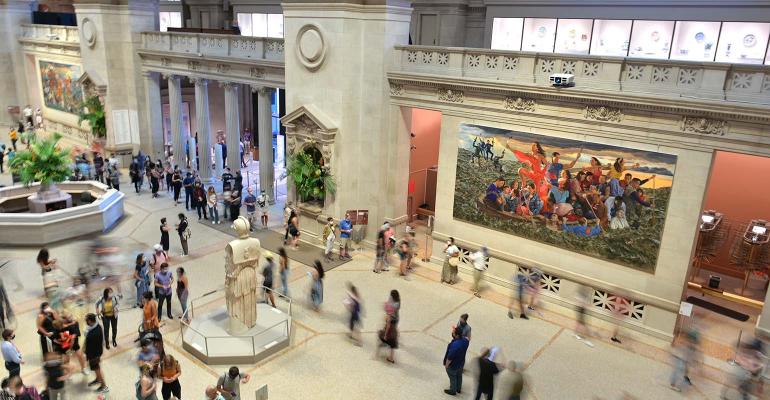A recent New York Times article published, May 9, 2023, reported that the New York Metropolitan Museum, after having dozens of pieces of art seized from the museum’s collection, is forming a team to scour its collections for items that are suspected of having been stolen or looted in the past.
In the first five months of 2023, there have been even more artworks seized from both public museum collections and from private clients and dealers. The sheer number of items listed on the various stolen art registers (700,000 at the Art Loss Register alone) is staggering. Even if the client purchased the artwork from a reputable dealer or inherited the piece decades ago, it still is subject to seizure and repatriation. The likelihood that the client does not have good title to the artwork is high enough that these assets should be taken into consideration when creating an estate plan.
Not only is there the potential loss of the artwork, but there are also significant financial and tax implications for the client’s estate as well. Having to pull artwork from an auction means that the estate has much less liquidity to meet potential estate tax and administrative costs as well as specific bequests. In one case, where a WW II veteran had stolen artwork from a church in Germany right after the war, a fact the family discovered after his death, the IRS, in a PLR, included the fair-market value of the looted artwork in the veteran’s estate for estate tax purposes, even though the artwork was seized and repatriated to the church from which it was stolen.
Determining the exact extent of stolen or looted art in the United States is difficult due to the illicit nature of such activities and the lack of comprehensive data. The illicit trade of stolen art is a global issue, and artworks stolen from various countries will find their way into the legitimate art market. This trade involves a network of underground dealers, clients and criminals who exploit the market for stolen art. Throughout history, looting has taken place during times of conflict, colonialism and war. This includes instances where cultural heritage objects, including artworks, have been plundered from their countries of origin. The looted art can be smuggled and sold in various markets. The result is that the collections of many museums and cultural institutions in the United States contain artwork that either was purchased, acquired or donated without proper regard to provenance to ensure that the artwork was not acquired through illicit means. Finally, the art market is generally unregulated and opaque, though efforts have been made to prevent the circulation of stolen artwork.
Protecting a client from the negative effects of owning stolen or looted artwork means either that the prior owner’s rights are extinguished, or there is a contingency in the estate plan for such an eventuality.
Although there is no statute of limitations for prior owners to claim title to stolen or looted art, a client can get what amounts to good title to the artwork against the claims of prior owners through the Doctrine of Laches. The Defense of Laches basically means that, on balance, the efforts of the client to safeguard their rights to the artwork and the injury the client will incur if the work is now recovered, outweigh the efforts of the prior owner to recover the artwork if they haven’t informed the art world of the loss, and the owner neglects to enforce their rights once the location of the artwork is uncovered.
Due diligence means more than accepting the seller’s word on the provenance of the artwork, however. It requires researching the artwork on registers such as the Art Loss Registry or the FBI Art Theft Program There are also specialty firms that provide due diligence for artwork, such as Winston Art Group, for a fee. A such, the level of due diligence required on the title to artwork is, for all but the wealthiest clients, unaffordable, since the research may cost more than the artwork itself.
If the Defense of Laches fails, then it is worthwhile to consider whether there are other options. For example, many heirs of former owners, on realizing that the artwork cannot be divided equitably among multiple heirs, are not averse to selling the artwork and dividing the proceeds. Alternatively, you can set up the gift in either the Will or the Trust, so that the fiduciary could disclaim the artwork and have it go to a charity so that, even if the artwork is repatriated, you are not increasing the taxes on the estate.
So, be aware that the client may not have good title to all their artwork and collectibles. Where there is one suspect item, there are likely to be more. It may be just the tip of the iceberg, and without due diligence and having a Plan B in place, your client's carefully crafted estate plan just may founder.
Matthew Erskine is managing partner at Erskine & Erskine.
